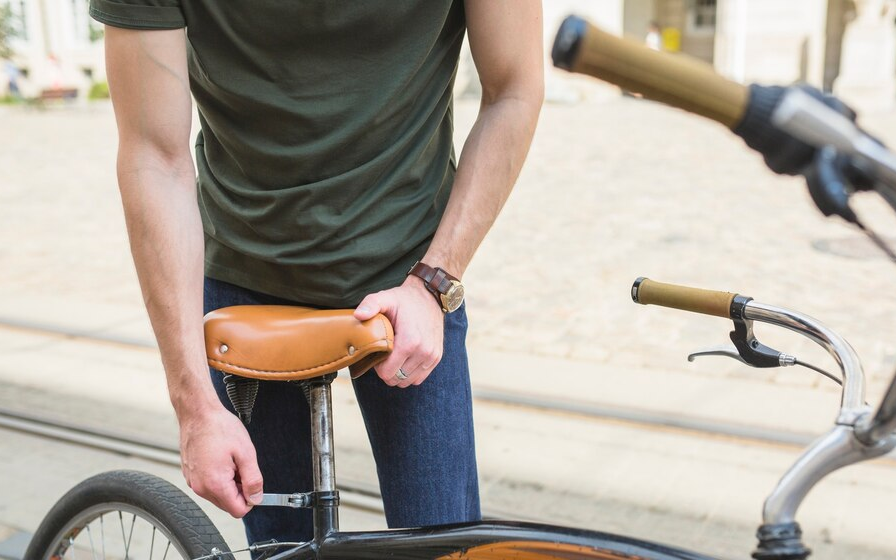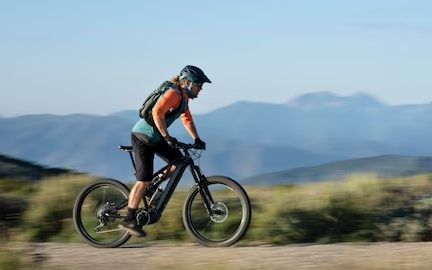Finding the right bike size is not as simple as it may seem. Bike size affects not only your comfort but also your safety and performance on the road or trail. Therefore, it is important to know how to measure bike size.
If your bicycle is too big or too small, you may experience pain, fatigue, or injury. You may also lose speed, control, or efficiency. That’s why you need to know how to measure bike size correctly and choose the best fit for you.
But how do you do that? There are different types of bikes, such as mountain, road, and city bikes, and each one has its sizing method.
In this blog post, we will show you how to measure a bike based on your height, inseam, and bike type. This way, you can enjoy cycling with confidence and comfort.
Why Bike Size Matters?
Bike size is the measurement of the frame that determines how well it fits your body. A bicycle that is too big or too small can cause discomfort, pain, or injury. It can also affect your speed, control, and efficiency on the road or trail.

That’s why you need to find the right bike size for your height, inseam, and riding style. Whether you are a road cyclist, a mountain biker, or a commuter, a proper fit will enhance your comfort, safety, and performance. Bike size matters because it makes a difference in your cycling experience.
How to Measure Bike Size?
In the following guide learn how to measure bike size for adults:
Inseam Measurement
If you want to find the right bicycle for your height, you need to know how to measure your inseam. Your inseam is the distance from the crotch to the floor, along the inside of your leg.

To measure it, you need a tape measure and a wall. Stand with your back against the wall and your feet about shoulder-width apart.
Place the tape measure at the top of your inner thigh and let it drop to the floor. Read the measurement in inches or centimeters. This is your inseam length. Knowing your inseam will help you choose a bike frame that fits you comfortably and safely.
Height Measurement
How to measure bike size by height? Measuring your height is easy and useful, especially if you are looking for a bicycle that suits you. All you need is a flat surface, a wall, and a ruler or a tape measure. Stand barefoot on the flat surface, with your back against the wall and your head facing forward.
Keep your shoulders relaxed and your posture straight. Use the ruler or the tape measure to mark the highest point of your head on the wall. Next, calculate the distance between the mark and the floor. This is your height in inches or centimeters.
Your height determines the bike size that fits you best, as it affects your reach to the handlebars and pedals. A cycle that matches your height will give you more comfort and control on the road.
Top Tube Length
The horizontal part of the bike frame that connects the head tube and the seat tube. The top tube length is the distance between the center of the head tube and the center of the seat tube, measured along the top tube.

The top tube length is important for finding the right bicycle fit, as it affects your riding position and comfort. A longer top tube will stretch you out more, making you more aerodynamic but also more prone to fatigue and back pain.
A shorter top tube will keep you more upright, making you more comfortable but also less efficient. The ideal top tube length depends on your height, arm length, and riding style.
Standover Height
It is the distance from the top of the bike frame to the ground, measured at the point where you would normally stand over the bike. Standover height is crucial for finding the right fit, as it affects your safety and confidence while riding.

A bicycle with a suitable standover height will allow you to easily mount and dismount the ride, as well as to stop and balance the bike with your feet on the ground. A too-high standover height will make you feel uncomfortable and insecure and increase the risk of injury in case of a fall.
To find your standover height, measure your inseam and compare it with the bicycle specifications.
Seat Tube Length
The tube is the vertical part of the bike frame that connects the bottom bracket and the seat post. It is the distance from the center of the bottom bracket to the top of the seat tube, measured along the seat tube.

The seat tube length is important for finding the right fit, as it affects your riding position and comfort. A longer seat tube will raise your saddle height, making you more efficient but also more stretched out.
A shorter seat tube will lower your saddle height, making you more relaxed but also less powerful. The ideal seat tube length depends on your leg length, inseam, and riding style.
How to Choose the Right Bike Type?
Choosing the right bike type depends on various factors, such as your riding style, preferences, and goals. Each type has its advantages and disadvantages, as well as sizing considerations.
There are three main types of bikes: road, mountain, and commuter or hybrid bikes.
Road Bikes
These bikes are engineered to be fast and maneuverable on smooth surfaces. They have lightweight frames, drop handlebars, and small tires.
Road bicycle sizing depends on your height, inseam, and reach. You also need to consider its geometry, such as the head tube angle, seat tube angle, and wheelbase, which affect the handling and comfort of the bike.
Mountain Bikes
These are made for off-road riding on rough terrain. They have wide tires, flat or riser handlebars, and suspension systems. Mountain bicycle sizing is based on your height and the frame size.

You also need to consider the type of mountain biking you want to do, such as cross-country, trail, or downhill, which require different levels of suspension travel and frame strength.
Commuter Or Hybrid Bikes
These are versatile bikes that can be used for everyday riding, such as commuting, fitness, or leisure. They have medium-sized tires, upright handlebars, and comfortable frames.
Commuter or hybrid bike sizing is similar to road bike sizing, but you may want to choose a slightly larger frame for more comfort and stability. You also need to balance the comfort and efficiency of the bike, depending on how far and how fast you want to ride.
How to Fine-Tune Your Bike Fit?
Bike fit is how you adjust your ride to your body and riding style. It is more than just the bike size, but also the saddle height, handlebar position, and stem length. A good fit can make you more comfortable, efficient, and injury-free, as it reduces stress and strain on your body.

To fine-tune your bicycle fit, you can follow some basic tips, such as:
Saddle Height: Your leg should be slightly bent at the bottom of the pedal stroke.
Handlebar Position: Your arms should be relaxed and your elbows slightly bent.
Stem Length: Your torso and arm angle should be around 90 degrees.
Disadvantages of Improperly Sized Bike Frame
An improperly sized bike frame can have many negative effects on your riding experience and performance. Some of the drawbacks of an improperly sized bike frame are:
Reduced Comfort: You may feel cramped or stretched on your bicycle, which can cause muscle soreness, fatigue, and pain in your neck, back, shoulders, arms, hands, hips, knees, or feet.

Reduced Efficiency: You may waste energy and power on your bicycle, which can affect your speed, endurance, and climbing ability. You may also have difficulty shifting gears, braking, and steering your bike.
Increased Risk of Injury: You may put excessive stress and strain on your joints, tendons, and ligaments, leading to inflammation, irritation, or damage. You may also have a higher chance of falling or crashing your bike due to poor handling and control.
Conclusion
Measuring bike size is an essential step to finding the perfect cycle for you. It involves knowing your height, inseam, and the bike frame size that corresponds to your measurements.
You also need to fine-tune your bicycle by adjusting the saddle height, handlebar position, and stem length. Finding the right bike size and fit can make a huge difference in your comfort, efficiency, and safety while riding.
We hope this blog post has helped you learn how to measure bike size and find your ideal bicycle. We encourage you to try out the steps we have provided and enjoy your ride.
FAQs
Opt for the smaller size for agility or the larger for comfort. Test rides help determine the best fit.
Ideal for heights 4’8″ to 5’5″, 24-inch bicycles suit younger riders and those looking for a compact option.
Refers to wheel diameter, common in mountain bicycles. Offers stability and versatility for various terrains and riding styles.
Common sizes are 26, 27.5, and 29 inches for mountain bikes and 700c for road bikes.



